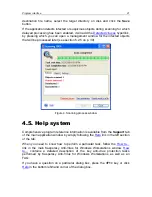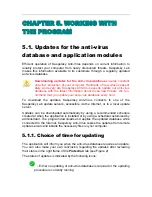
10 Kaspersky
Anti-Virus
®
5.0 for Windows Workstations
3. Read the information about your situation on the website carefully.
You will probably have to take additional measures.
4. If viruses (for example,
Nimda
,
Klez
, or
Badtrans
) have penetrated
your computer by exploiting Microsoft Outlook Express
vulnerabilities, they can reactivate even after Kaspersky Anti-Virus
cleans the system, for example, when you are reading previously
infected messages. Therefore, check if the protection mode that
scans e-mail database is enabled (for more information, please
contact your system administrator) and install the latest security
patches for Microsoft Outlook to ensure its safe future operation.
Unfortunately, some viruses cannot be totally removed from infected objects.
Some of them destroy information on your computer during infection.
2.4. If nothing helps…
If the symptoms described above persist even after you have scanned your
computer, hardware, and software, and have checked your hard drive using
Windows utilities, please feel free to send a letter with a full description of your
problem to the Technical Support Service of Kaspersky Lab.
If you are sure that some files are Trojan programs or are infected, send these
files to Kaspersky Lab for expert analysis.
For details of how to send messages and files to Kaspersky Lab,
see Appendix B on p. 46.
2.5. After you eradicate the infection
After you get rid of the infection, scan all disks and floppy disks that may be
infected with a virus.
Make sure that you have the latest version of Kaspersky Anti-Virus installed on
your computer and you use the latest anti-virus database and the default settings
recommended by the Kaspersky Lab experts (for more information about
Kaspersky Anti-Virus settings, please contact your system administrator).
Read carefully
How to prevent a virus infection
section (see section 5.2 on
p. 24) and pay attention to the main security rules that will help you to prevent
future virus infections.











































